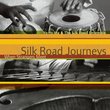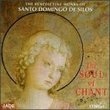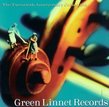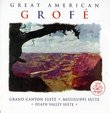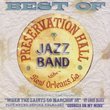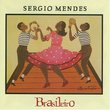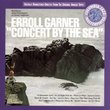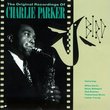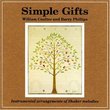| All Artists: Giovanni Gabrieli, Girolamo Frescobaldi, Richard Burgin, Cleveland Brass Ensemble, Philadelphia Brass Ensemble, Chicago Brass Ensemble, Boston Brass Ensemble, E. Power Biggs Title: The Antiphonal Music of Gabrieli Members Wishing: 0 Total Copies: 0 Label: Sony Release Date: 10/1/1996 Album Type: Original recording remastered Genres: Special Interest, Classical Styles: Chamber Music, Forms & Genres, Fantasies, Historical Periods, Baroque (c.1600-1750) Number of Discs: 1 SwapaCD Credits: 1 UPC: 074646235324 |
Search - Giovanni Gabrieli, Girolamo Frescobaldi, Richard Burgin :: The Antiphonal Music of Gabrieli
 | Giovanni Gabrieli, Girolamo Frescobaldi, Richard Burgin The Antiphonal Music of Gabrieli Genres: Special Interest, Classical
Venice was a good place to be in the 17th century if you liked to hang out in church--not that you had much choice in those days. Gabrieli's reputation rests on his "polychoral" compositions: works for several choirs, a ... more » |
Larger Image |
CD DetailsSynopsis
Amazon.com Venice was a good place to be in the 17th century if you liked to hang out in church--not that you had much choice in those days. Gabrieli's reputation rests on his "polychoral" compositions: works for several choirs, a choir being any size group of voices or instruments. For example, a sacred composition for three choirs might have two brass groups and one chorus, or two choruses and one brass ensemble. The idea was to keep things flexible to allow for changing local conditions. The result, in any case, was a magnificent "question and answer" style of writing, in which great blocks of harmony challenged each other from opposite sides of San Marco Cathedral. If this sort of thing intrigues you, then you owe it to yourself to hear this terrific collection. It's a cosmic experience. --David Hurwitz Similarly Requested CDs
|
CD ReviewsThe Standard of Excellence 127 | Michigan | 11/10/2000 (5 out of 5 stars) "This is one of the top handful of brass albums available. It is a once-in-a-lifetime recording - many of America's top brass players reading through polyphonic music of Gabrielli. Playing, intonation, and ensemble are all exactly what you should expect: outstanding. Also, this album is not the result of hours upon hours in the studio - the rehearsal and recording took place in a total of nine hours (the Chicago/ Cleveland/ Philadelpia brass ensemble part). That aspect adds further to this CD's special place in the listening catalogue.This CD falls basically into two parts: the Chicago/ Cleveland/ Philadelpia brass ensemble and E. Power Biggs/ Boston Brass Ensemble. I find the triple brass group to be more of the attraction than the organ and smaller brass group. E. Power Biggs has numerous other recordings, but this is the only one made by the combined forces of three of America's top brass sections. The 13 tracks of Gabrielli are more than worth the price. Still, with the inclusion of Armado Ghitalla from Boston, the performer list for this album reads like a "Who's Who" of American orchestral brass players.Don't be thrown off by the thin neckties on the cover - fashion may have moved on, but the musical strength of this album has not wavered at all. Notes are detailed and excellent, and the price is lower than more recent but lesser quality CDs. If you buy one album of brass instruments, this should be it." I got this off a horn players digest and ordered my copy... acola@westell.com | chicago | 09/15/1998 (5 out of 5 stars) "Hello everyone, I have a reccomendation........... BUY "THE ANTIPHONAL MUSIC OF GABRIELI"...... Recorded in 1959 and 1968 with the Philadelphia Brass Ensemble, The Cleveland Brass Ensemble, and the Chicago Brass ensemble... all playing together, guess who the horn players are? Mason Jones, Dale Clevenger, and Myron Bloom. This recording is simply incredible... it is a MUST buy for everyone, I have never heard such fine brass playing, the unity and sense of ensemble is incredible, and the musicality is amazing. It is even incredible that somehow they got all of the legends from Chicago, Cleveland, and Philadelphia together to make this recording back then....anyways.. this is definetely a must hear, it's probably the best CD I have added to my collection. The CD is digitally remastered by Sony... providing a rather unique surround sound... the different ensembles come in through different sides of your headset or speakers as you would hear them if you were at the live performance... its truly amazing.... BUY IT!!" A VERY special album Michael Pollitz | Orlando | 08/02/2005 (5 out of 5 stars) "If you've been into brass for 40 years, you probably already know that this is a very unusual gathering of the top of the top!
My only complaint is with the web site sound samples being MONO ! This album is in STEREO and really portrays the placement of the 3 major antiphonal quintets! You won't be disapointed." |

 Track Listings (32) - Disc #1
Track Listings (32) - Disc #1